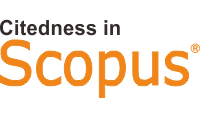Determinants of Investment Decision Through Sharia Financial Technology
DOI:
https://doi.org/10.46870/milkiyah.v3i1.662Keywords:
The planned behaviour, Sharia Financial Technology, InvestmentAbstract
The level of investment through Islamic Peer-to-Peer (P2P) Lending ascends. This study aims to determine the direct effect of perceived behavioural control, perceived benefit, perceived easiness, and perceived risk on investment decision through sharia peer-to-peer lending. The further purpose is to find out the indirect effect of perceived behavioural control, attitude toward investment, and subjective norm on investment decision through sharia peer-to-peer lending intervened by investment intention. Through primary data distributed using online questionnaire to residents who live in Indonesia and investing through Sharia Financial technology peer-to-peer lending platform, final sample was 135 respondents. The data analysis technique used is Structural Equation Modelling Partial Least Square (SEM-PLS). The result of this study finds that there is a significant effect on the perceived behavioural control, perceived easiness, and perceived risk on investment decision through sharia peer-to-peer lending while the insignificant effect of sharia compliance and perceived benefit on investment decision through sharia peer-to-peer lending has been found. Subsequently, perceived behavioural control, attitude toward investment, and subjective norm have no effect at all on investment decision through sharia peer-to-peer lending intervened by investment intention.
References
Achmat, Z. (2010). Theory of Planned Behavior, Masihkah Relevan? http://Zakarija. Staff. Umm. Ac. Id/Files/20, 10, 12.
AFPI. (2021a). Akumulasi Pencairan Pinjaman Fintech Syariah Capai Rp 1,7 T. Republika, https://ekonomi.republika.co.id/berita/qo1uhz370/akumulasi-pencairan-pinjaman-fintech-syariah-capai-rp-17-t
AFPI. (2021b). Pembiayaan Fintech Lending Tumbuh 25 Persen di 2020. Liputan6, https://www.liputan6.com/bisnis/read/4457235/pembiayaan-fintech-lending-tumbuh-25-persen-di-2020
Ahada, R. (2019). Bagaimana Adopsi Penggunaan Mobile Banking Bri ( Studi Pada Nasabah Bank Bri Di Kota Bandung ) How To Adopt the Use of Bri Mobile Banking ( Study of Bri Bank Customers in Bandung ). 1, 13–28.
Ajzen, I. (1991). The Theory of Planned Behavior. Organizational Behavior and Human Decision Processes, 50(2), 179–211. https://doi.org/10.1016/0749-5978(91)90020-T
Amelia, R., & Wibowo, D. (2020). Analysis of Public Interest in Sharia Investing Through Financial Technology Companies. Advances in Economics, Business and Management Research, 151(ICMAE), 388–392. https://doi.org/10.2991/aebmr.k.200915.089
Arifin, Z. (2009). Dasar-Dasar Manajemen Bank Syariah. Jakarta : Azkia Publisher.
Bagwell, T. J. (2023). Factors Influencing the Adoption of Financial Technology and Net Benefit in Indonesia Banking. International Journal of Marketing and Management, 4(1), 1-11.
Bank Indonesia. (2016). Booklet Keuangan Inklusif Keuangan dan UMKM Bank Indonesia. www.bi.go.id.
Bauer, R. A., & Bauer, A. H. (1960). America, ‘Mass Society’ and Mass Media. Journal of Social Issues, 16(3), 3–66. https://doi.org/10.1111/j.1540-4560.1960.tb00953.x
Chen, L., & Yang, X. (2019). Using EPPM to Evaluate the Effectiveness of Fear Appeal Messages Across Different Media Outlets to Increase the Intention of Breast Self-Examination Among Chinese Women. Health Communication, 34(11), 1369–1376. https://doi.org/10.1080/10410236.2018.1493416
Dahlan, A. A., Zulkifli, A. H., Nasution, H., Aziz, A. A., Perang, M. R. M., & Jamil, H. M. (2014). Performance study of hydrocarbon mixture for green vehicle air-conditioning system. Energy Procedia, 61, 266–269. https://doi.org/10.1016/j.egypro.2014.11.1104
Darmansyah, Aziz, p.f., Fianto, B.A., Achsania, and Hendratmi. (2020). Factors Determining Behavioral Intentions to Use Islamic Financial Technology: Three Competing Models. Journal Islamic Marketing, 12(4), 794-812, https://doi.org/10.1108/JIMA-12-2019-0252.
Davis, F. D. (1989). Perceived usefulness, perceived ease of use, and user acceptance of information technology. MIS Quarterly: Management Information Systems, 13(3), 319–339. https://doi.org/10.2307/249008
Deloitte. (2021). 2021 Global Marketing Trends.Deloitte, https://www2.deloitte.com/xe/en/pages/strategy-operations/articles/2021-global-marketing-trends.html.
Dowling, G. (2006). Perceived Risk: The Concept and Its Measurement. Psychology and Marketing, 3(3), 193–210. https://doi.org/10.1002/mar.4220030307
Featherman, M. S., & Pavlou, P. A. (2003). Predicting e-services adoption: A perceived risk facets perspective. International Journal of Human Computer Studies, 59(4), 451–474. https://doi.org/10.1016/S1071-5819(03)00111-3
Financial Stability Board. (2017). Financial Stability Implications from Fintech: Supervisory and Regulatory Issues that Merit Authorities’ Attention. Financial Stability Board, June, 1–61.
Fornell, C., & Larcker, D. F. (1981). Structural Equation Models with Unobservable Variables and Measurement Error: Algebra and Statistics. Journal of Marketing Research, 18(3), 382-388. https://doi.org/10.2307/3150980
Goodhue, D. L., Lewis, W., & Thompson, R. (2012). Does PLS Have Advantages for Small Sample Size or Non-Normal Data? MIS Quarterly, 36(3), 981–1001. https://doi.org/10.2307/41703490
Hair, J. F., Hult, G. T. M., Ringle, C. M., & Sarstedt, M. (2014). A primer on partial least squares structural equation modeling (PLS-SEM). International Journal of Research & Method in Education, 38(2), 220–221. https://doi.org/10.1080/1743727x.2015.1005806
Hair, J., Hollingsworth, C. L., Randolph, A. B., & Chong, A. Y. L. (2017). An updated and expanded assessment of PLS-SEM in information systems research. Industrial Management and Data Systems, 117(3), 442–458. https://doi.org/10.1108/IMDS-04-2016-0130
Hair, J., William, B., Barry, B., & Anderson, R. (2010). Examining Your Data. Multivariate Data Analysis, 1–58.
Henseler, J., Ringle, C. M., & Sarstedt, M. (2015). A new criterion for assessing discriminant validity in variance-based structural equation modeling. Journal of the Academy of Marketing Science, 43(1), 115–135. https://doi.org/10.1007/s11747-014-0403-8
Hidayat, W., & Nugroho, A. A. (2010). Studi Empiris Theory of Planned Behavior dan Pengaruh Kewajiban Moral pada Perilaku Ketidakpatuhan Pajak Wajib Pajak Orang Pribadi. European Journal of Gastroenterology and Hepatology, 14(5), 491–496. https://doi.org/10.1097/00042737-200205000-00005
Hoyle, R. (1995). The Structural Equation Modeling approach: Basic concepts and fundamnetal issues. Thousand Oaks, CA: Sage Publications, Inc.
Indonesia Internet Service Providers Association (2020). Survei APJII: 73 Persen Masyarakat Terhubung Internet. APJII, https://en.dailysocial.id/post/survei-apjii-penetrasi-internet-indonesia-2020
Investment Coordinating Board. (2020). Domestic and Foreign Direct Investment. Economic Growth and Development, December 2020, 61–78. https://doi.org/10.1007/978-1-137-29031-1_4
Kim, D. J., Ferrin, D. L., & Rao, H. R. (2008). A trust-based consumer decision-making model in electronic commerce: The role of trust, perceived risk, and their antecedents. Decision Support Systems, 44(2), 544–564. https://doi.org/10.1016/j.dss.2007.07.001
Kock, N. (2018). Should Bootstrapping Be Used in PLS-SEM? Toward Stable P-Value Calculation Methods. Journal of Applied Structural Equation Modeling, 2(1), 1–12. https://doi.org/10.47263/jasem.2(1)02
Kompas. (2020). Minat Milenial Berinvestasi Naik di Tengah Pandemi, Kok Bisa? Kompas,https://money.kompas.com/read/2020/12/22/183100326/minat-milenial-berinvestasi-naik-di-tengah-pandemi-kok-bisa-
Merdeka. (2020). Bank Syariah Indonesia Fokus Utamakan Nasabah dan Pelaku UMKM. Merdeka, https://www.merdeka.com/uang/bank-syariah-indonesia-fokus-utamakan-nasabah-dan-pelaku-
Nurdin, Musyawarah, I., Nurfitriani, & Jalil, A. (2020). Pengaruh Pelayanan Mobile Banking Terhadap Kepuasan Nasabah (Studi Pada Mahasiswa Perbankan Syariah IAIN Palu). Jurnal Ilmu Perbankan Dan Keuangan Syariah, 2(1), 87–104.
OJK. (2020). Perkembangan Fintech Lending Desember 2020. 1–11. OJK, https://ojk.go.id/id/kanal/iknb/data-dan-statistik/fintech/Documents/Statistik Fintech Lending Desember 2020.pdf
Peter, J. P., & Ryan, M. J. (1976). An Investigation of Perceived Risk at Brand Level. Journal of Marketing Research, 13(2), 184–188. https://doi.org/10.2307/3150856
Ramadani, O. V., Kadir, A. R., & Sanusi, A. (2018). Analisis Pengaruh Shariah Compliance dan Assurance terhadap Kepuasan Nasabah BMT Barokatul Umah di Kabupaten Merauke. Economica: Jurnal Ekonomi Islam, 9(2), 349–375. https://doi.org/10.21580/economica.2018.9.2.2662
Rochmawati, S., & Purnomosidhi, B. (2019). Pengaruh Sikap, Norma Subjektif, Kontrol Perilaku Persepsian, Persepsi Resiko, Persepsi Kebermanfaatan Terhadap Minat Penggunaan Kartu Kredit. Jurnal Ilmiah Mahasiswa FEB Universitas Brawijaya, 1(2), 1–14.
Salsabila, Safa' (2020) Pengaruh persepsi return, risiko, harga, kepatuhan syariah, dan pengetahuan terhadap minat mahasiswa berinvestasi saham di pasar modal syariah. Undergraduate thesis, Universitas Islam Negeri Maulana Malik Ibrahim.
Syarfi, S. M., & Asandimitra, N. (2020). Implementasi Theory of Planned Behavior dan Risk Tolerance terhadap Intensi Investasi Peer to Peer Lending. Jurnal Ilmu Manajemen, 8(3), 864–877. https://doi.org/10.26740/jim.v8n3.p864-877
Winkel, D. R., Hubbard, W. D., Sheppard, A., Off, J. A., Chem, A., & Hendrick, S. A. (1984). Detection Limits for a. 73(1), 115–117.
Downloads
Published
How to Cite
Issue
Section
License
Copyright (c) 2024 Milkiyah: Jurnal Hukum Ekonomi Syariah

This work is licensed under a Creative Commons Attribution-NonCommercial 4.0 International License.

















